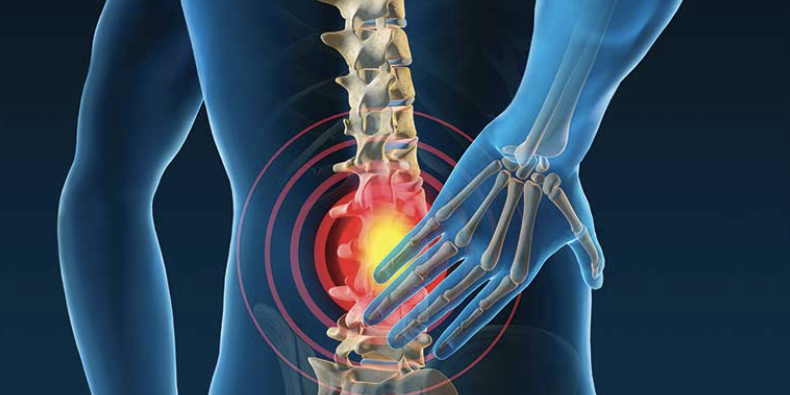Overview
Approximately 31 million people in the USA suffer with chronic low back pain making it a widespread problem. Sometimes the pain is due to dysfunction of the sacroiliac joint. There is difficulty in correctly diagnosing SIJD because lower back pain can also be caused by injuries and degenerative conditions.
One of the causes of lower back or leg pain is thought to be dysfunction in the sacroiliac joint. When a joint is not performing normally, it is termed dysfunctional. It can be challenging to diagnose SIJD because the leg pain is similar to sciatica or herniation of a lumbar disc.
The bottom of the spine is the location of the sacroiliac joint, above the tailbone and below the lumbar spinal cord. This joint connects the pelvis (iliac crest) with the sacrum (a triangular bone at the bottom of the spine).
The joint typically has the following characteristics:
- Reinforcement by strong ligaments surrounding this small joint make it very strong
- Very little motion
- Acts as a shock-absorber for all of the forces exerted by the upper body to the pelvis and legs
Symptoms of SIJD
The most common symptoms for patients are highlighted below:
- pain in the lower back
- lower extremity tingling, numbness, and pain
- pelvic, hip or groin pain
- leg instability (such as leg buckling or giving way)
- sleep pattern disturbance
- sitting pattern disturbance (unable to sit for long periods, sitting on one side)
- pain going from sitting to standing
Causes and Risk Factors
Either one can cause this source of pain:
- Too much movement: Pain is usually in the lower back or hip area and can extend out to the groin area. It is not clear how this pain is caused. But it appears that the change in normal joint motion can be the cause.
- Too little movement: usually felt on one side of the lower back, can radiate down the buttocks and leg. Most of the time pain is experienced above the knee, but it can also go down to the ankle or foot.
Osteoarthritis
Osteoarthritis: sacroiliac joint pain is commonly caused by osteoarthritis because this joint has cartilage that cushions and protects the bones. As this cartilage wears away over time, osteoarthritis develops. Pain and stiffness develops as the joint gets irritated and inflamed. The Arthritis Foundation provides more in-depth information.
Osteoarthritis is the most common form of arthritis, affecting millions of people worldwide. Although osteoarthritis can damage any joint, the disorder most commonly affects joints in your hands, knees, hips and spine.
Pregnancy
Many experience sacroiliac pain during pregnancy. There are hormones released during pregnancy that naturally cause your ligaments to become loose, preparing your body for childbirth. Due to extra weight, there are gait changes increasing stress to the joint and pain.
Other causes
Other conditions can also cause sacroiliac joint pain, including:
- Gout
- Rheumatoid arthritis
- Ankylosing spondylitis
- Traumatic injury
Pain should never be ignored. If you suffer a minor injury the pain should be gone after a few days of rest. If not, this pain may be a sign of a more serious problem. Seeking professional help is indicated.
Diagnosis
Difficulty in accurately diagnosing sacroiliac joint dysfunction arise because the symptoms are similar to other common conditions.
The diagnosis is made through a physical examination and the process of elimination to rule out other causes.
Treatment Options
Treatments for sacroiliac joint dysfunction are usually conservative (meaning minimally invasive or non-surgical). The focus is on trying to restore normal motion in the joint:
Common treatments include:
- Ice, heat, and rest.
- Medications: Acetaminophen (Tylenol) and NSAID medications (such as ibuprofen or naproxen) to reduce the swelling that usually contributes to the pain.
- Physical Therapy: Controlled and gradual physical therapy strengthens the muscles surrounding the sacroiliac joint. This also increases your range of motion and will relieve pain. In addition, any gentle, low-impact aerobic exercise will help improve blood flow to the area, stimulating healing. If pain is severe, water therapy is an option because the buoyancy of the water reduces any stresses on the joint.
- Sacroiliac joint injections.
Our skilled therapists understand the complexity of this condition and are experts at relieving these symptoms.
Click here or call us today to make an appointment for a physical therapy evaluation to determine if you have SIJD.



